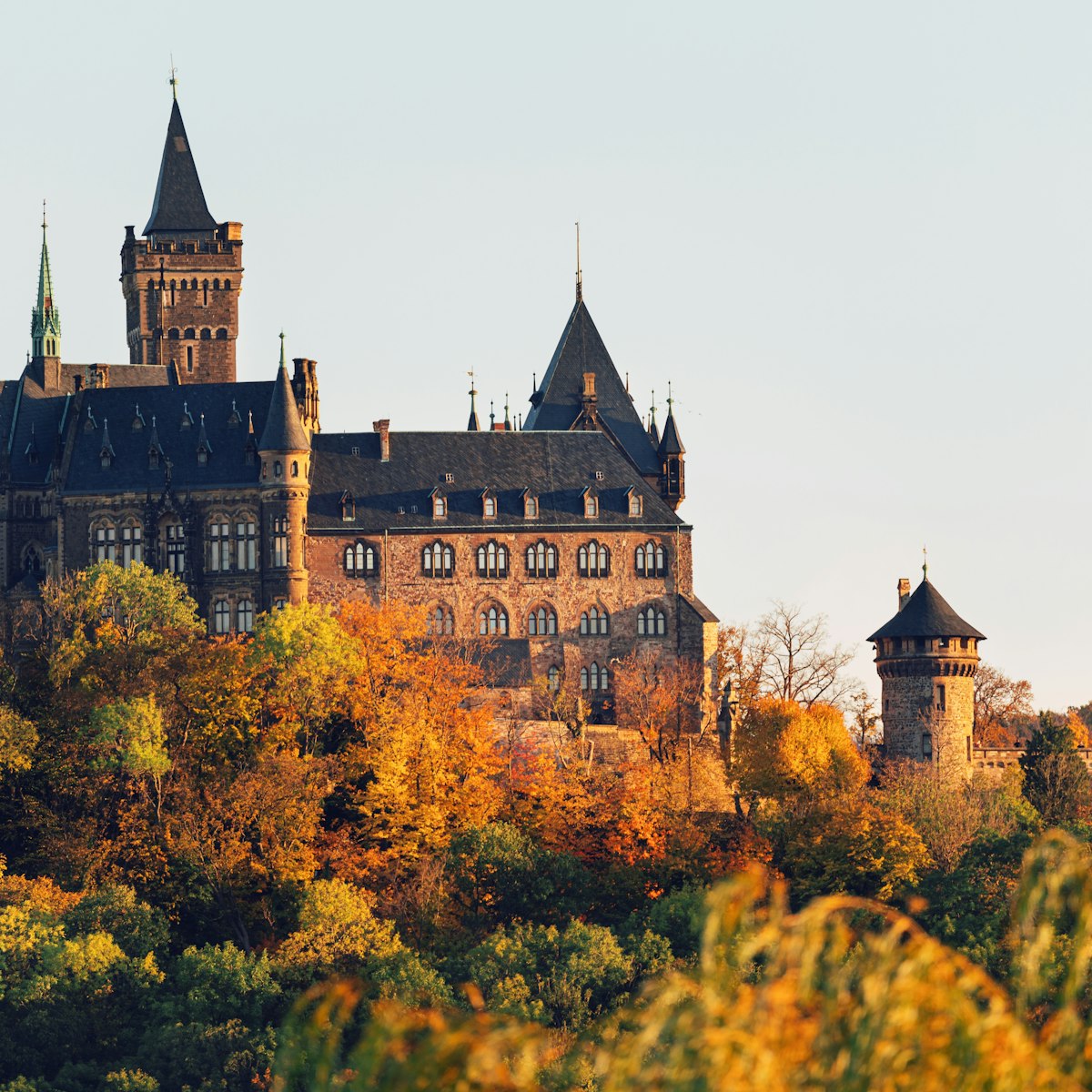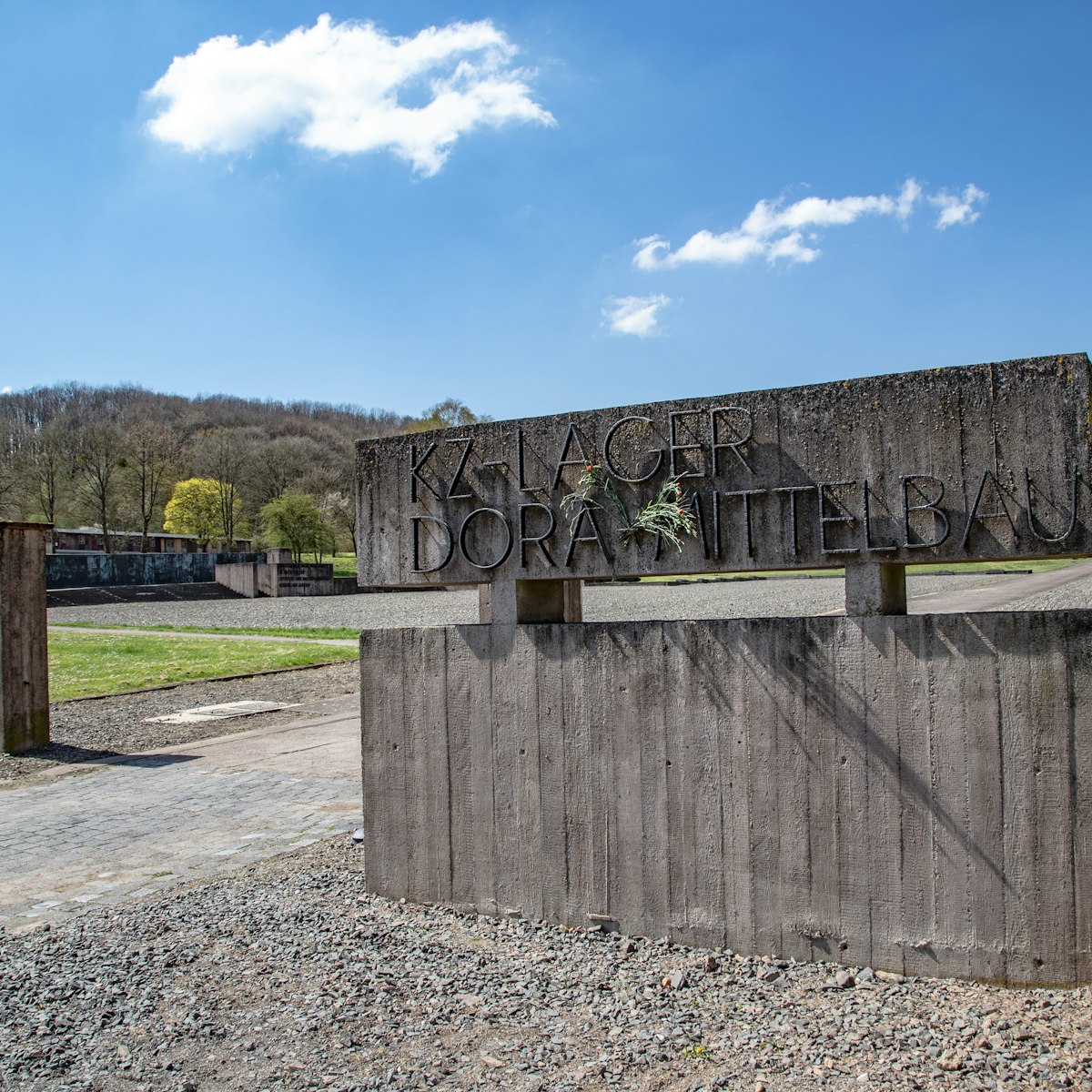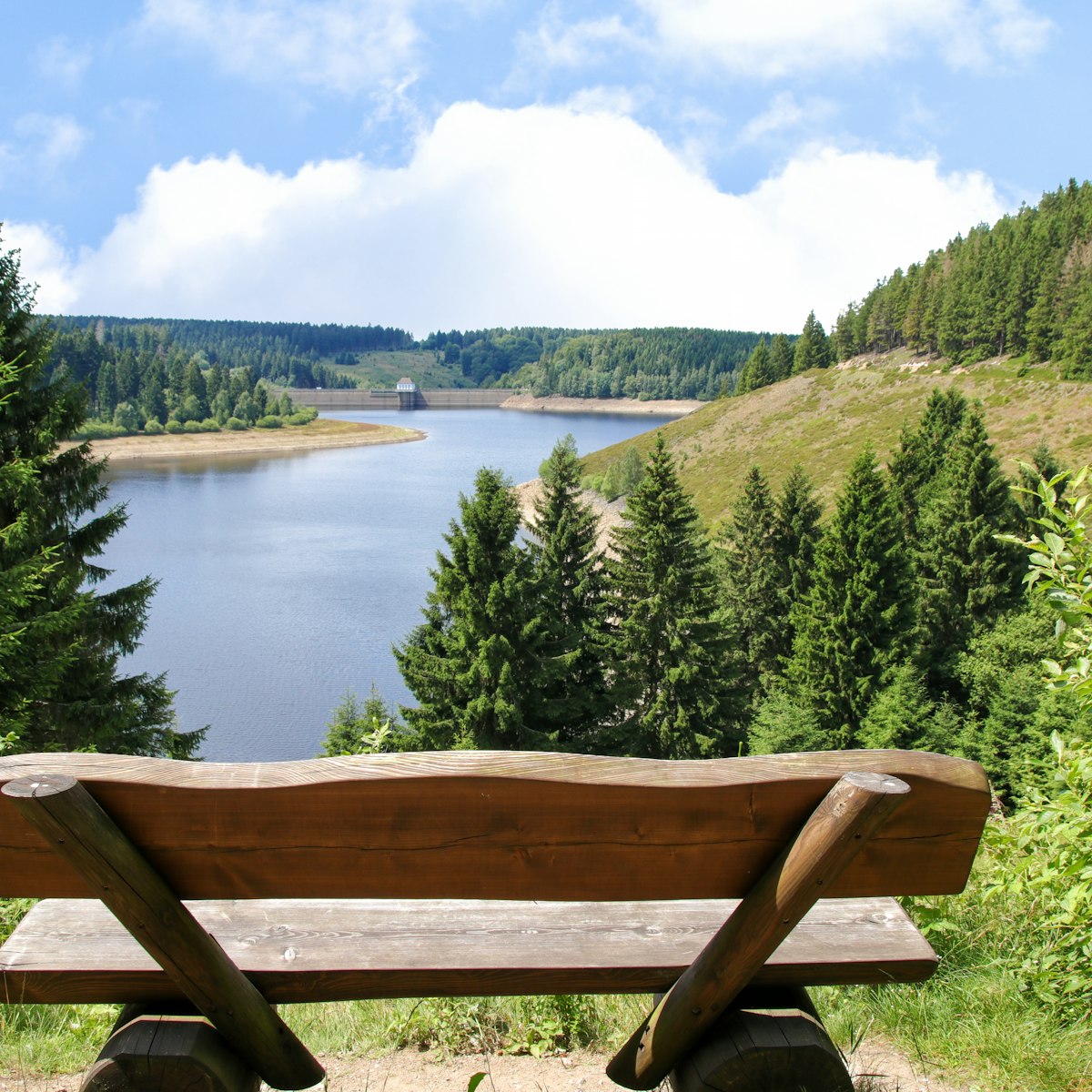Lovely views await at the top of Rosstrappe peak, which takes its name from what is supposedly a horse’s hoof print, visible in stone on the cliff, left by the mythical Brunhilde when she sprang over the gorge on horseback to avoid marrying the giant Bodo. He leapt after her, landing in a watery grave, horse and all. Access is by chairlift or a short but strenuous hiking trail. Go early or late in the day to avoid crowds.
Signs direct you to the chairlift from the Thale Hauptbahnhof, near where the Presidentenweg hiking trail also begins.



